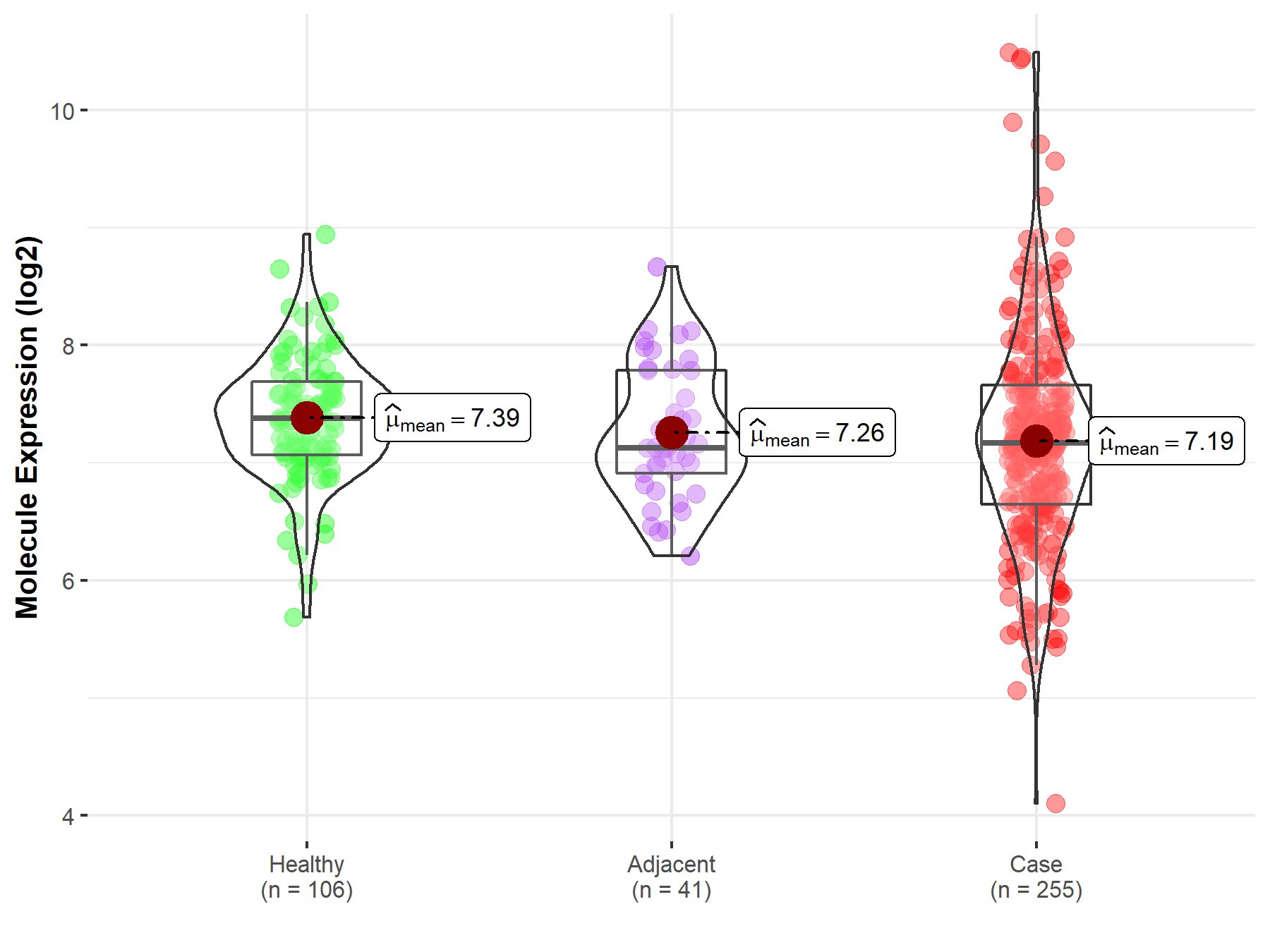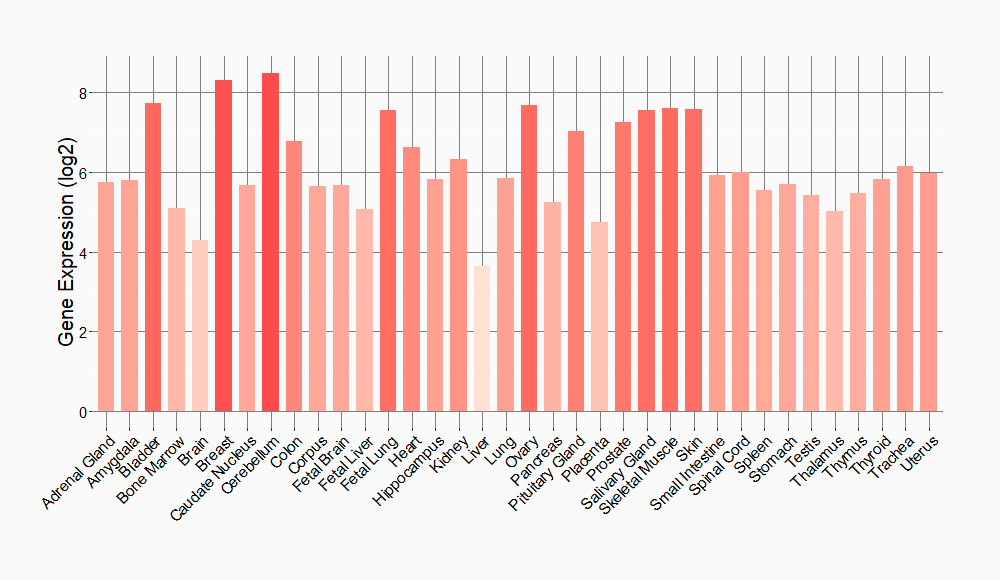Molecule Information
General Information of the Molecule (ID: Mol01927)
| Name |
Frizzled class receptor 7 (FZD7)
,Homo sapiens
|
||||
|---|---|---|---|---|---|
| Synonyms |
FZD7
Click to Show/Hide
|
||||
| Molecule Type |
Protein
|
||||
| Gene Name |
FZD7
|
||||
| Gene ID | |||||
| Sequence |
MRDPGAAAPLSSLGLCALVLALLGALSAGAGAQPYHGEKGISVPDHGFCQPISIPLCTDI
AYNQTILPNLLGHTNQEDAGLEVHQFYPLVKVQCSPELRFFLCSMYAPVCTVLDQAIPPC RSLCERARQGCEALMNKFGFQWPERLRCENFPVHGAGEICVGQNTSDGSGGPGGGPTAYP TAPYLPDLPFTALPPGASDGRGRPAFPFSCPRQLKVPPYLGYRFLGERDCGAPCEPGRAN GLMYFKEEERRFARLWVGVWSVLCCASTLFTVLTYLVDMRRFSYPERPIIFLSGCYFMVA VAHVAGFLLEDRAVCVERFSDDGYRTVAQGTKKEGCTILFMVLYFFGMASSIWWVILSLT WFLAAGMKWGHEAIEANSQYFHLAAWAVPAVKTITILAMGQVDGDLLSGVCYVGLSSVDA LRGFVLAPLFVYLFIGTSFLLAGFVSLFRIRTIMKHDGTKTEKLEKLMVRIGVFSVLYTV PATIVLACYFYEQAFREHWERTWLLQTCKSYAVPCPPGHFPPMSPDFTVFMIKYLMTMIV GITTGFWIWSGKTLQSWRRFYHRLSHSSKGETAV Click to Show/Hide
|
||||
| Function |
Receptor for Wnt proteins. Most frizzled receptors are coupled to the beta-catenin canonical signaling pathway, which leads to the activation of disheveled proteins, inhibition of GSK-3 kinase, nuclear accumulation of beta-catenin and activation of Wnt target genes. A second signaling pathway involving PKC and calcium fluxes has been seen for some family members, but it is not yet clear if it represents a distinct pathway or if it can be integrated in the canonical pathway, as PKC seems to be required for Wnt-mediated inactivation of GSK-3 kinase. Both pathways seem to involve interactions with G-proteins. Activation by WNT8 induces expression of beta-catenin target genes. Following ligand activation, binds to CCDC88C/DAPLE which displaces DVL1 from FZD7 and leads to inhibition of canonical Wnt signaling, activation of G-proteins by CCDC88C and triggering of non-canonical Wnt responses. May be involved in transduction and intercellular transmission of polarity information during tissue morphogenesis and/or in differentiated tissues.
Click to Show/Hide
|
||||
| Uniprot ID | |||||
| HGNC ID | |||||
| Click to Show/Hide the Complete Species Lineage | |||||
Type(s) of Resistant Mechanism of This Molecule
Drug Resistance Data Categorized by Drug
Approved Drug(s)
1 drug(s) in total
| Drug Sensitivity Data Categorized by Their Corresponding Mechanisms | ||||
|
|
||||
| Disease Class: Anaplastic thyroid cancer | [1] | |||
| Sensitive Disease | Anaplastic thyroid cancer [ICD-11: 2D10.2] | |||
| Sensitive Drug | Pyrvinium | |||
| Molecule Alteration | Expression | Up-regulation |
||
| Experimental Note | Revealed Based on the Cell Line Data | |||
| Cell Pathway Regulation | Wnt signaling pathway | Activation | hsa04310 | |
| In Vitro Model | LNCaP cells | Prostate | Homo sapiens (Human) | CVCL_0395 |
| HCT116 cells | Colon | Homo sapiens (Human) | CVCL_0291 | |
| Experiment for Molecule Alteration |
Western blotting analysis; ART sensitivity assay | |||
| Experiment for Drug Resistance |
CCK-8 cell proliferation assay; Flow cytometry | |||
| Mechanism Description | Pyrvinium pamoate can overcome artemisinin's resistance in anaplastic thyroid cancer. The resistance of CAL-62 to ART was related to the upregulation of the WNT signaling pathway. | |||
Disease- and Tissue-specific Abundances of This Molecule
ICD Disease Classification 02

| Differential expression of molecule in resistant diseases | ||
| The Studied Tissue | Thyroid | |
| The Specified Disease | Thyroid cancer | |
| The Expression Level of Disease Section Compare with the Healthy Individual Tissue | p-value: 1.03E-02; Fold-change: -2.16E-01; Z-score: -4.14E-01 | |
| The Expression Level of Disease Section Compare with the Adjacent Tissue | p-value: 5.07E-01; Fold-change: 3.76E-02; Z-score: 6.52E-02 | |
|
Molecule expression in the normal tissue adjacent to the diseased tissue of patients
Molecule expression in the diseased tissue of patients
Molecule expression in the normal tissue of healthy individuals
|
||
| Disease-specific Molecule Abundances |

|
Click to View the Clearer Original Diagram |
Tissue-specific Molecule Abundances in Healthy Individuals


|
||
References
If you find any error in data or bug in web service, please kindly report it to Dr. Sun and Dr. Zhang.
